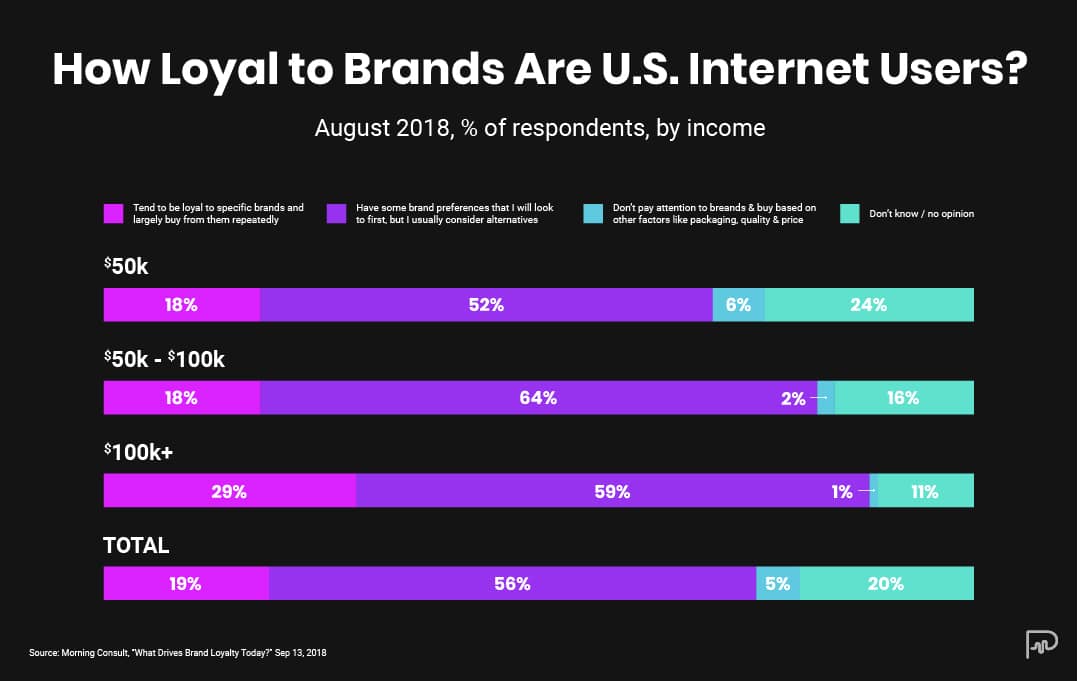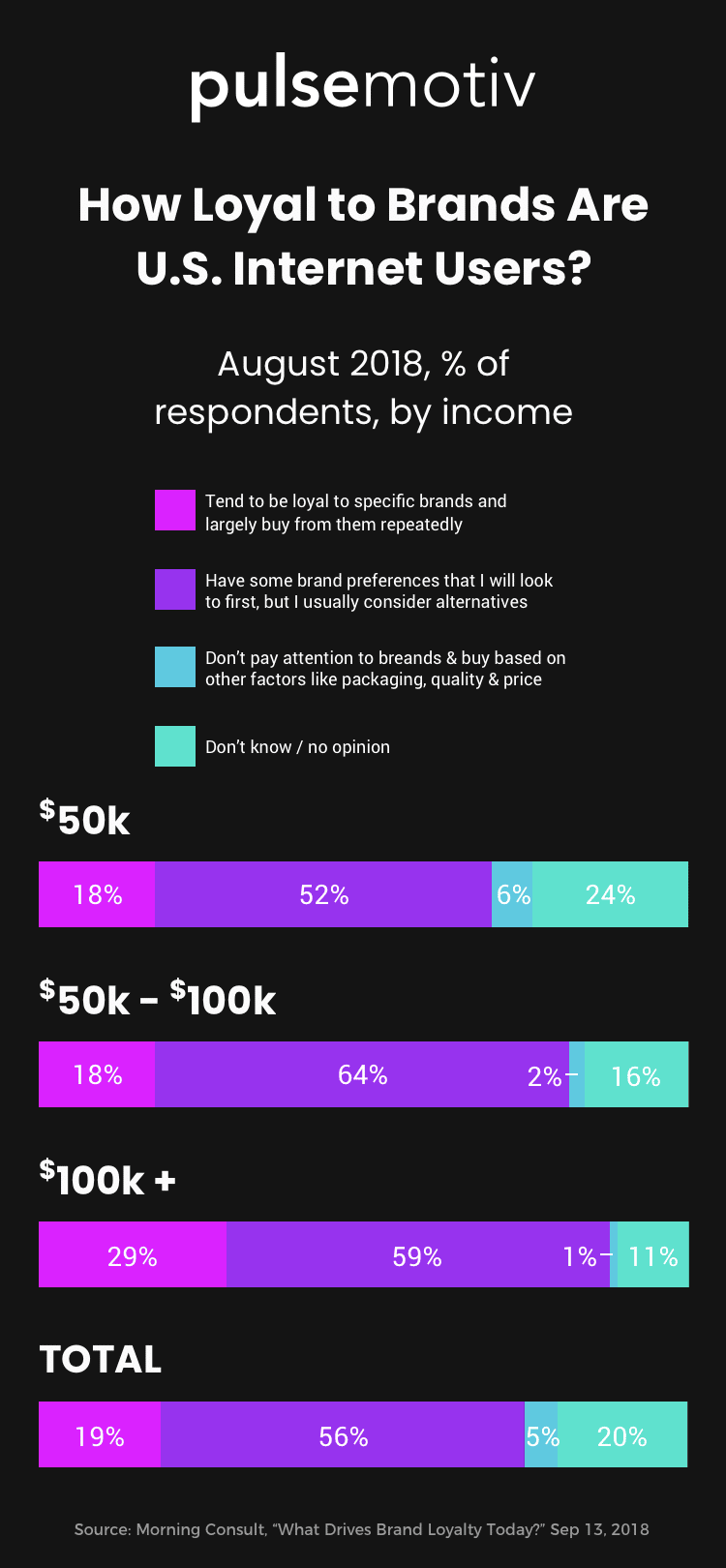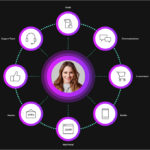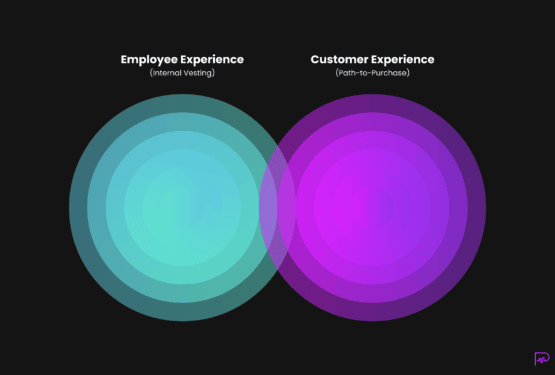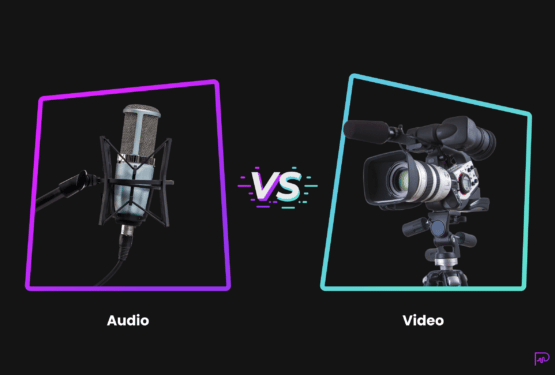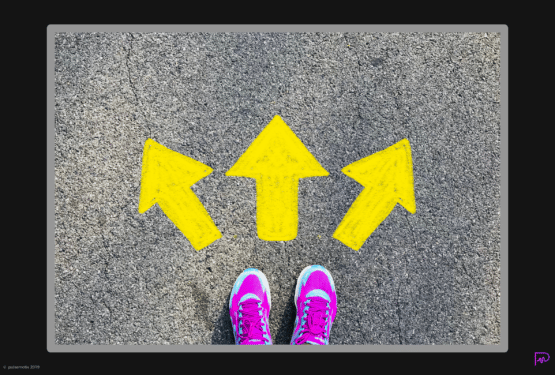We’re not naive to the fact that the term user guidance doesn’t sound very enthralling. Visions of error messages and complicated pathways might scroll through your head. But here’s the reality. Guiding your buyers along their journey with your company goes far deeper than putting up some basic bumper lanes to keep them on course.
When you need to get points on the board and dollars in your company’s pockets, user guidance is the trickshot to help you score.
In this post, I’m going to walk you through what user guidance looks like (because there are many discrepancies around the term), why it matters in today’s new digital age, and how to apply it at every stage of the modern marketing funnel. Ready to learn? Okay let’s go.
What is User Guidance and Why Should You Care?
Simply put, user guidance is the process of shepherding a person from one point to another, usually to lead their approach for how they engage with your brand. This type of guidance is often done using messages, prompts, and other types of labels to make it clear where to go and how to get to the next logical step — and it’s never been more needed.
The digital ecosystem has become crowded and cluttered. More companies have relied on user guidance methodologies to avoid losing website visitors and customers to the many distractions online, which has sparked an evolution in how organizations reach consumers. As the Internet continues to evolve, so do the opportunities for users to engage with organizations and each other.
Understanding this evolution is worth your while if you want to stay relevant and competitive. By burying your head in the sand, you’ll effectively ignore new patterns of user behavior and miss the chance to evolve alongside the people you need the most to grow your business — consumers.
To paint a picture of how dramatic this evolution has been, let’s take a look at how far we’ve come within the span of a decade.
The Changing Face of Digital Experiences
It wasn’t too long ago that brands owned the relationship with the customer. Companies were the ones who were empowered to shape the buyer’s perception of the brand through their messaging. That’s because, if the customer wanted more information about a business, they went to the brand’s website or other marketing materials they produced. The brands were in the driver’s seat chauffeuring buyers to their destination.
That’s no longer the case. Today’s consumers live in what Google calls micro-moments.
Micro-moments take place every time a person turns to the Internet for help, answers, or guidance. In other words, it’s that moment someone stops mid-recipe to ask, ‘Hey Google, how many ounces are in a pint?’ or stops mid-conversation to settle an argument by looking up the exact wording of the third verse of Bohemian Rhapsody. In all cases users expect an immediate answer from the omniscient internet. It’s this feeling of instant-gratification and help-at-your-fingertips that has left today’s buyers feeling more empowered than ever before. And it doesn’t stop there.
Today’s buyers have used their newfound empowerment to share their experiences with others via digital channels. Social networks and review sites, like Yelp, are used as information hubs by the vast majority of consumers. These sites have amplified consumer’s voices, making it easier to share the good, bad, and ugly about their experiences with brands. In shifting the power from brands to consumers, it’s now possible to destroy a brand’s reputation in a matter of seconds, and within 140 characters.
The digital ecosystem has given consumers a voice loud enough to drown out the advertisements and messages from brands. The entire digital experience has transformed, putting consumers in the driver’s seat.
And it doesn’t stop at customer’s ability to be more vocal. Because of this shift in power structure, brands have had to clamor for attention. That clamoring has left consumers feeling like brands are intruding on their privacy in ways they haven’t seen before. In a desperate attempt for attention, brands have increasingly dropped ads in social networks as a means of stopping the scroll and getting people off social platforms. When it comes to their own site, they vie for the attention of users by integrating pop-ups that interrupt the digital experience. That interruption-based approach has been quickly rejected by consumers – 81% of people today close a web page because of a pop-up ad, opting for native advertising instead.
Yes, today’s digital experience has become more brash with all the clutter, but user guidance can change that perception by warming up the web and making it feel inviting instead of intrusive. Here’s how.
User Guidance Across the Sales Funnel
Before we dig into how user guidance is utilized across the sales funnel, we must first look at what a modern marketing funnel looks like today. We’ve steered clear away from traditional sales funnels, practiced a decade ago, that pushed people into the four basic categories of leads, prospects, opportunities, and clients.
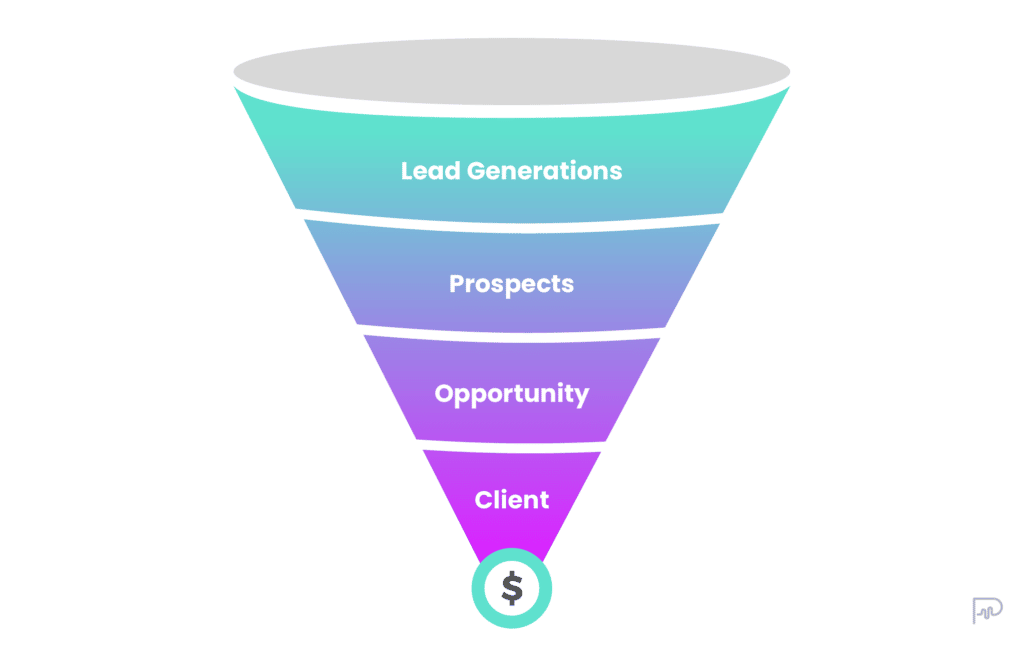
Today’s sales funnel is a little more inviting and a lot more complex. Because of the digital age we’re living in, we’re able to gather more data about what people are doing and leverage that data to create more customer-centric messages.
This digital shift has changed the way we view the sales funnel, inspiring innovative approaches at looking across shorter increments in the buyer’s journey. The sales funnel today looks more like a bow tie funnel, turning tradition on its side and embracing all aspects of the user’s journey with a brand. It looks like this.
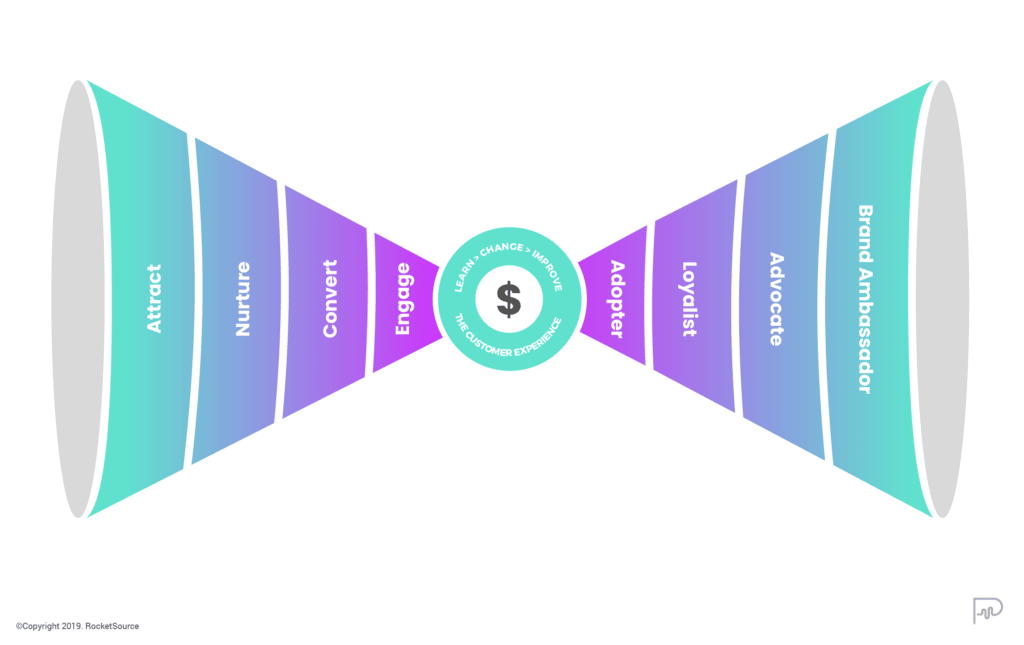
As you can see here, the same steps are included in the beginning stages of the journey. Brands still attract leads, nurture those leads through the consideration phase of their journey, then ultimately convert prospects into buyers. But, according to Invesp, it costs five times as much to attract new customers as it does to retain an existing customer. Traditional sales approaches are incomplete because they only focus on getting new people to buy, leaving their existing customers feeling neglected after they’ve handed over their hard-earned money. To have a comprehensive view of the buying experience, sales funnels also need to consider the progression of the customer from an ‘Adopter’ to a ‘Brand Ambassador’ post-purchase.
You might have a goal of reducing your cost of acquisition (CAC), and you should. But equally important, if not more important, is increasing your retention rates and lengthening the lifetime value (LTV) of the buyer. You can influence these key metrics by acting as a guide at every stage of your user’s journey with you.
Brand ambassadors are the ultimate goal of every brand, but to develop this level of customer loyalty requires consistent and compassionate engagement. One way to get that compassionate engagement is by speaking the buyer’s language. And to get into your customer’s mind, pull out their thoughts, requires you to use the same words, tone, and texture to your speech as they use when communicating with and about your brand. A word cloud generator can help you draw out those terms, making it easy to know specifically how to best communicate with your customers and drive deep into their wants. Beautiful, gorgeous data that makes an impact.
Another way to reach that goal, brands must shift the way the organization communicates across the funnel. Instead of using pushy messaging to drive the conversation, brands now must humanize the approach by tapping into new organic ways of guiding the user across their journey.
Let’s break it down step-by-step to get a better understanding of how to soften the frequently loud, overwhelming, digital experience using innovative user guidance.
Awareness
In this stage, buyers are babies to your brand. They’re opening their eyes for the first time to how you can help them solve a problem. Because they aren’t sure what they need, they’re often a little fearful and uncertain about where to go. Their eyesight is still fuzzy, so they’re not sure what specifically they need from you or where to look.
When it comes to user guidance, understanding the psychological associations of your brand and cognitive biases of your customers is paramount. Through the exercise of StoryVesting, we are able to glean an empathetic perspective of how people think, feel, and operate to then define what the overall experience should look like.
If you’re unfamiliar with the StoryVesting framework, you’re going to want to do yourself a favor and set aside some time to read up on it. There’s a lot to it. The research and the backstory to how it came to life is fascinating, but that’s a story for another post.
I bring it up here because a key component in the framework is the customer’s experience along their path-to-purchase. It looks like this.
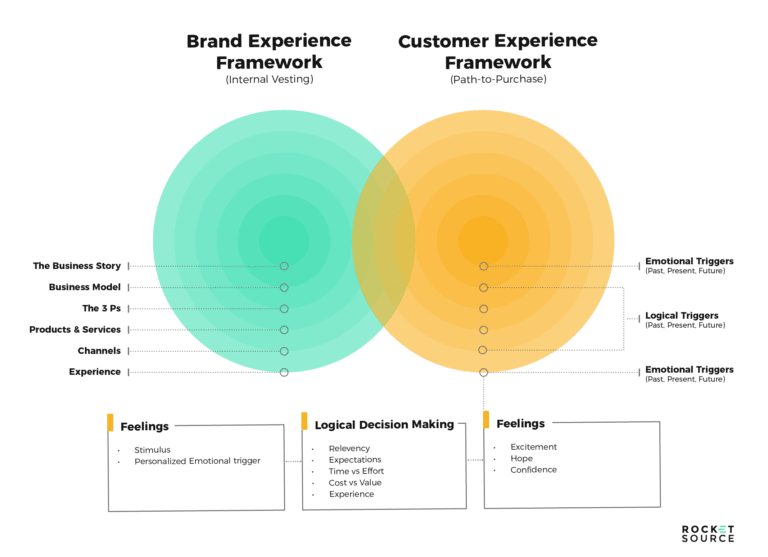
The concentric circle on the right represents the predictable path buyers take when making a purchase. At the epicenter — the start of it all — are the emotional triggers that kickstart a buyer searching for what you have to offer. These emotional triggers are key to a long-lasting, lucrative relationship. Studies show that marketers under-leverage emotional connection, failing to use emotional appeal to it’s best advantage. When an emotional trigger is pulled, Motista found that customers have a 306% higher lifetime value (LTV) and stay with the brand for 5.1 years, compared to the average of 3.4 years. It’s here that you form that emotional connection and harness it to guide the buyer in the right direction.
By identifying what your buyer is thinking and feeling and harnessing a better understanding of emotional triggers, you can simultaneously clarify their vision and comfortably guide them to the next stage of their journey in a way that feels welcome and warm.
Consideration
Once out of the awareness stage, your buyer is likely comparing your offerings against those of your competitor. Your buyer is looking at your brand more logically, instead of emotionally, and assessing what you have to offer.
- Will your product be relevant to their needs?
- Is it worth the time and effort it’ll take to buy?
- Can they trust that what you promise will match what they receive?
It’s at this stage that your buyer has questions and they expect personalized answers from you along the way. Personalization is a huge differentiating factor. Despite the technology developed to facilitate a more personalized experience, Accenture found that marketing personalization is getting worse rather than better.
Research continues to emphasize how much consumers value personalization and how marketers who struggle to deliver the right kinds of experiences are losing out. – Accenture
Personalization doesn’t have to be a one-to-one interaction. You can personalize an experience by recommending items based on past search behavior. Sounds a little like you’re playing big brother, at risk of turning some people off? That’s true, if you do it in a way that feels like you’re creeping on your users behind their back. On the flipside, if you infuse upfront, honest, transparency into your retargeting, you can actually improve the user experience.
Harvard Business School researchers found that transparent ad targeting boosts engagement. The consumers they studied were 40% more likely to click on items that were recommended specifically for them, and when they did, they spent 31% more time on those product pages.
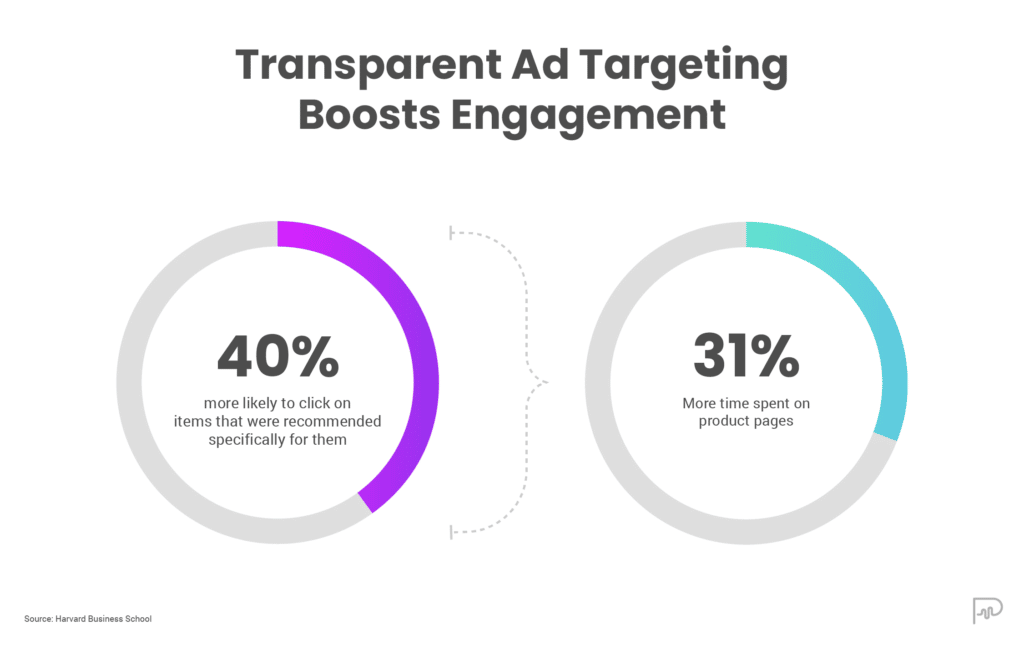
When marketers are transparent and communicate how they are using customer data to target ads, they see an increase in customer engagement and purchasing. By predicting the type of information your buyer wants to see along their journey, you can preemptively guide that person through the funnel by showing up to guide them in the right place at the right time. The experience will inspire trust and familiarity, making it easier for your buyer to ultimately buy.
Acquisition
This is it! Your brand is the chosen one in the buyer’s eyes. For this initial purchase, at least. But often, the buying process isn’t as cut and dry for your buyer as it is for you. For example, if you’re an agency selling a complex service, the acquisition phase can be filled with question marks and concerns. If you’re a FBA seller, you’re relying on a third-party to fulfill the shipment of your product, leaving you slightly out of the loop and without full control.
These, and hundreds of other complicated buying processes, are prime examples of why it’s so critical that you remain shoulder-to-shoulder with your buyer to walk them through the purchase. The better you do this, the fewer abandoned shopping carts you’ll see.
Engagement
In this stage immediately following a purchase, your buyer experiences a myriad of emotions. It’s in this phase that people tend to reconcile past, present, and future experiences into one perception to determine their satisfaction with the purchase. How did they feel when making the purchase, how do they feel about about the decision to buy now that it’s over–and are they looking forward to using the product or going through the purchase process again? To eliminate the all-too-common and dreaded feeling of buyer’s remorse, you must guide your user along their initial steps of exploring what they bought from you.
Appcues Chief Operating Officer, Jackson Noel, said that onboarding is the most important part of the customer journey. Take Software as a Service (SaaS) businesses as a prime example of why. These companies lose 75% of users within the first week. By the end of the first month, they’re typically down to 6%.
Regardless of whether you’re in retail, a service-based business, or a non-profit, it’s important to walk your buyer through how to get the best outcomes as soon as they buy. The better you guide your users along that initial learning curve, the better the experience they’ll have and the more likely they’ll be to move toward the brand ambassador stage of the bow tie funnel.
Adopters, Loyalists, Advocates, and Brand Ambassadors Need Guidance Too
Think your user guidance strategy ends when you’ve collected money from your customer? Think again.
Do you know what makes consumers loyal to brands? It’s liking the product. 67% of Gen X and 75% of Boomers said when they find a product they like, they’ll buy it over and over again.
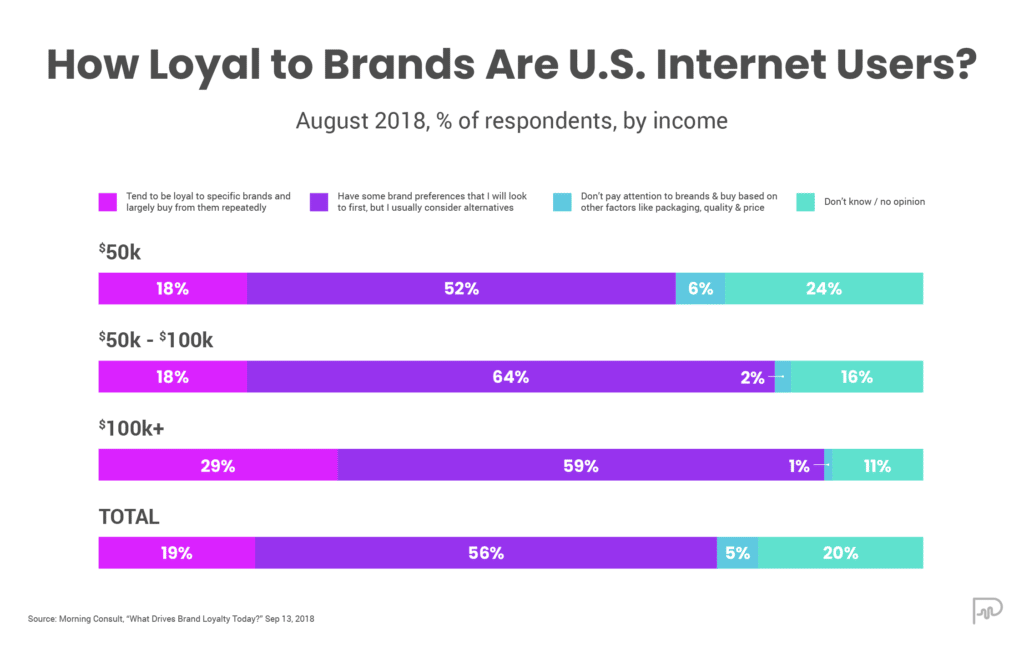
If you’re not guiding them along their journey, you could be missing an opportunity to showcase why a person should buy from you.
And it’s not just the product and service that drives loyalty. When InMoment analyzed customer loyalty in retail, they found that 26% of customers said they felt more loyal to brands than to products or services.
But loyalty takes a long time. We said it before and we’ll say it again. Loyalty rarely happens instantaneously. InMoment found that only 15% of customers experienced love at first sight. 80% of customers said that they grew to love the brand over time. That loyalty is the ultimate goal because customers who continue to support your brand over time will spend 67% more and are cheaper to nourish than new customers, according to the Edelman Trust Barometer.
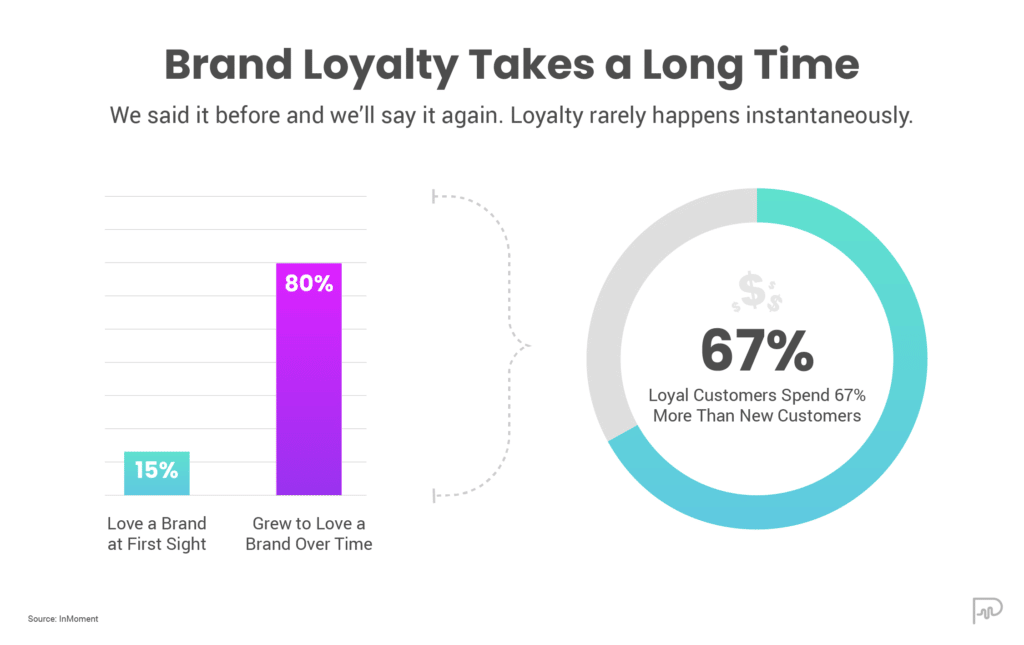
Driving this kind of loyalty requires you to be side-by-side with your buyer for the journey. It requires you to soften the chaos of the web and invite people into your ecosystem. The cozier you make it there, the easier it’ll be for your customers to latch on to what you have to offer, ultimately lowering CAC and increasing LTV.
Ready, Set, Grow
User guidance is the art and science of showing up for your customers in the right place at just the right time. By taking an empathetic approach to your buyer’s journey, you can understand what’s needed throughout the bow tie funnel. Then, you can regain control of your buyer’s journey by softening the digital experience and making it feel more inviting. This approach will leave your customers with confidence and clarity as they deepen their ties with your brand.

